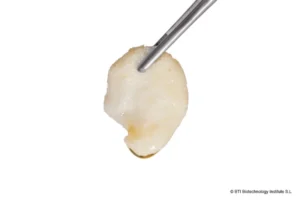Bone regeneration for implants is a critical process that enhances the success of dental implant procedures. When teeth are lost, the jawbone can begin to deteriorate, which complicates the placement of dental implants. Bone regeneration involves techniques such as bone grafting to rebuild and strengthen the jaw structure, providing a stable foundation for implant placement. This article explores the various methods and technologies used in bone regeneration, as well as the long-term benefits it offers for dental restoration.
The Science Behind Bone Regeneration
Bone regeneration is a remarkable process that allows the human body to repair and replace damaged or lost bone tissue. This capability is crucial, especially in the field of implantology, where successful tooth implantation often relies on the quality of the underlying bone. Understanding the science behind bone regeneration provides insights into how modern dental practices can enhance and facilitate this natural phenomenon.
Over the years, significant advancements in bone regeneration techniques have been made, driven by a better understanding of the biological and molecular mechanisms that govern this process. Researchers and clinicians have developed various methods to optimize bone regeneration, ranging from surgical techniques to the use of biomaterials and growth factors. This section delves into the underlying principles of bone regeneration, exploring the biological mechanisms involved and the factors that can influence this critical process. By comprehending these aspects, dental professionals can improve patient outcomes and ensure the longevity of dental implants.
What is Bone Regeneration?
Bone regeneration refers to the process by which new bone tissue is produced to repair and replace damaged or missing sections of bone. This process is not only essential for healing fractures but also plays a critical role in dental procedures, such as the placement of implants, where a solid bone foundation is necessary for implant stability.
Unlike other tissues in the body, bone has a unique ability to fully regenerate and regain its original structure and function. This capacity is especially important in dental implantology, where the success of an implant depends on the integration of the implant with the surrounding jawbone, a process known as osseointegration.
Several factors can prompt bone regeneration, including surgical interventions, mechanical stimuli, and the use of biocompatible materials. In clinical settings, bone grafting procedures often utilize these principles to enhance bone growth in areas where the bone is insufficient to support an implant.
Biological Mechanisms Involved
The process of bone regeneration is complex and involves a series of highly coordinated biological events. Initially, an inflammatory response occurs at the site of injury or bone loss, which is crucial for recruiting cells necessary for tissue repair. This phase is followed by the formation of a blood clot and the subsequent development of granulation tissue.
One of the key players in bone regeneration is the osteoblast, a type of cell responsible for synthesizing new bone matrix. Osteoblasts originate from mesenchymal stem cells, which differentiate into bone-forming cells under the influence of various growth factors and signaling molecules.
Another critical component is the extracellular matrix (ECM), which provides a scaffold for new bone formation. The ECM is rich in collagen and other proteins that facilitate cell attachment and proliferation. Additionally, the ECM undergoes constant remodeling by the coordinated action of osteoblasts and osteoclasts, cells that resorb bone tissue.
Growth factors such as bone morphogenetic proteins (BMPs) and transforming growth factor-beta (TGF-β) are also vital for regulating the different stages of bone regeneration. These molecules stimulate the recruitment and differentiation of progenitor cells, promote angiogenesis (formation of new blood vessels), and enhance the overall healing process.
Factors Affecting Bone Regeneration
Several intrinsic and extrinsic factors can influence the efficiency and success of bone regeneration. Understanding these factors is essential for optimizing clinical outcomes in dental implantology and other medical fields requiring bone healing.
One of the primary intrinsic factors is the patient’s overall health and biological age. Conditions such as osteoporosis, diabetes, and systemic inflammation can impair bone regeneration by affecting cell function and the body’s ability to respond to healing signals. Nutritional status also plays a crucial role, as deficiencies in nutrients such as calcium and vitamin D can hinder bone formation.
Extrinsic factors include the type of surgical technique employed and the use of biomaterials. For example, autografts (bone grafts taken from the patient’s own body) are often considered the gold standard for bone grafting due to their superior biocompatibility and osteogenic potential. However, alternative materials such as allografts (donor bone) and synthetic scaffolds are also widely used.
- Mechanical stability at the site of bone regeneration is another critical factor. Adequate stabilization through the use of fixation devices or implants can promote better healing outcomes.
- Additionally, local blood supply is vital for delivering nutrients and oxygen to regenerating tissues, and techniques that enhance vascularization can significantly improve bone healing.
By considering these factors, clinicians can tailor treatment plans to individual patients, enhancing the likelihood of successful bone regeneration and implant integration.
For more detailed insights into the latest advancements in dental implantology and bone regeneration, continue exploring our articles. Stay informed and stay ahead in your practice!
Techniques and Materials Used in Bone Regeneration
Bone regeneration is a critical component in the field of implantology, providing the necessary support and structure required for successful dental implants. Various techniques and materials have been developed to facilitate effective bone regeneration, ensuring both functional and esthetic outcomes. In this section, we will explore some of the most commonly used methods and substances in bone regeneration.
Understanding the properties and applications of different bone regeneration materials is essential for any dental professional in order to determine the most appropriate approach for each patient. Factors such as the extent of bone loss, patient health, and specific dental needs are considered when choosing a technique.
Two primary categories of materials are frequently used in bone regeneration: autografts and allografts, and synthetic bone substitutes. Each category offers unique advantages and potential drawbacks, making it critical for clinicians to be knowledgeable in their application to optimize patient outcomes.
Autografts and Allografts
Autografts are considered the gold standard in bone regeneration. They involve harvesting bone from one area of the patient’s body and transferring it to another. The high osteogenic potential of autografts ensures excellent integration and regeneration capabilities. Common donor sites include the iliac crest, chin, and even other intraoral locations. The primary advantage of autografts is their ability to promote new bone formation due to their cellular components and growth factors.
However, autografts come with certain challenges. The need for a secondary surgical site increases the complexity and potential morbidity of the procedure. Patients may experience discomfort or complications at the donor site, making it essential to weigh the risks and benefits carefully.
Allografts, on the other hand, are derived from a human donor other than the patient. These grafts are processed and sterilized to ensure they are safe for transplantation. Allografts eliminate the need for a secondary surgical site, reducing overall patient morbidity. They are available in various forms, such as freeze-dried bone or demineralized bone matrix, each offering different properties and integration potential.
While allografts are convenient and effective, they may present a risk of immune rejection or disease transmission, although advanced processing techniques have significantly minimized these risks. Allografts are widely used in clinical practice due to their reliability and ease of use.
Synthetic Bone Substitutes
Synthetic bone substitutes provide an alternative to natural graft materials. These substitutes are typically composed of biocompatible materials such as hydroxyapatite, tricalcium phosphate, or bioactive glass. Their primary function is to serve as a scaffold for new bone growth, guiding and supporting the regeneration process.
One of the main advantages of synthetic substitutes is their availability and consistent quality. Unlike autografts and allografts, synthetic materials do not depend on donor availability, and their properties can be precisely controlled during manufacturing. This ensures a reliable and predictable outcome for bone regeneration procedures.
Moreover, synthetic bone substitutes are associated with fewer complications as they eliminate the risks of disease transmission and immune response. They are often combined with growth factors or bone marrow aspirate to enhance their osteogenic potential, making them a versatile option for various clinical situations.
However, synthetic materials may not always match the biological performance of natural grafts. Research continues to advance in this area, with new materials and composites being developed to improve their osteoconductive and osteoinductive properties. Clinicians must stay informed about the latest innovations to provide the best care for their patients.
By mastering the various techniques and materials used in bone regeneration, dental professionals can ensure successful implant procedures and long-term patient satisfaction. This foundational knowledge is crucial for achieving optimal results in implantology. For more comprehensive insights and the latest updates in this field, be sure to explore our other articles.
Clinical Applications and Benefits for Implants
Dental Implants
Dental implants have revolutionized the field of dentistry by providing a permanent solution for missing teeth. Implants are typically made from titanium, which is biocompatible and encourages osseointegration, the process by which the implant fuses with the bone. This ensures a strong and durable foundation for artificial teeth.
The benefits of dental implants are manifold. They not only improve the aesthetic appearance by mimicking natural teeth but also aid in maintaining oral health. Implants prevent bone loss that usually follows tooth extraction. This preservation of bone structure helps in maintaining the integrity of the facial skeleton.
Furthermore, dental implants contribute to improved chewing efficiency and speech clarity. Unlike dentures, which can slip and cause discomfort, implants are stable and functional. Patients often report a significant boost in self-confidence and quality of life following implant surgery.
Orthopedic Implants
Orthopedic implants are devices surgically placed to support or replace damaged bones and joints. Commonly used materials include titanium, stainless steel, and cobalt-chromium alloys, which offer high strength and biocompatibility. These implants play a critical role in treating fractures, deformities, and other bone conditions. The application of orthopedic implants can range from internal fixation devices like plates and screws to joint replacement prosthetics. Their primary function is to stabilize the affected area, allowing proper alignment and encouraging natural bone healing. This results in reduced pain and improved functional outcomes for the patients.
Patients who receive orthopedic implants often experience a significant improvement in mobility and quality of life. The success rates are high, with a majority of patients returning to their normal activities post-recovery. The implants are designed to last many years, reducing the need for further surgical interventions.
Post-Surgical Bone Healing
Post-surgical bone healing is a crucial aspect of implantology. The integration of the implant with the bone, known as osseointegration, is influenced by several factors including surgical technique, implant design, and patient health. Successful osseointegration is essential for the longevity and functionality of the implant.
Several strategies can be employed to enhance bone healing post-surgery:
- Bone grafting: Used when there is insufficient natural bone. It provides a scaffold for new bone growth.
- Use of growth factors: Such as platelet-rich plasma (PRP) to accelerate healing.
- Optimized implant surfaces: To promote better bone attachment.
Proper post-operative care and patient compliance with prescribed protocols are also critical. Regular follow-up appointments ensure that any potential complications are identified and managed promptly. This holistic approach allows for optimal healing and implant success.
Understanding the clinical applications and benefits of implants can significantly enhance treatment outcomes. For more in-depth insights, consider exploring other articles that delve into specific techniques and advancements in implantology.
Common Questions on Bone Regeneration for Implants
Here’s a focused insight into commonly asked questions regarding bone regeneration techniques used in conjunction with dental implants.
What is bone regeneration and why is it important for dental implants?
Bone regeneration is a process used in dentistry to enhance or restore the bone structure in the jaw that is necessary for supporting dental implants. This procedure is critical because sufficient bone mass is required to anchor the implants securely, which ensures the long-term success of the implant and the overall structural integrity of the jaw.

My name is Salman Kapa, a 73-year-old expert in bone regeneration and dental implantology. With decades of experience in the field, I am dedicated to advancing our understanding of oral health and hygiene. Through my research and writing, I aim to contribute to the development of innovative solutions in dental care.




